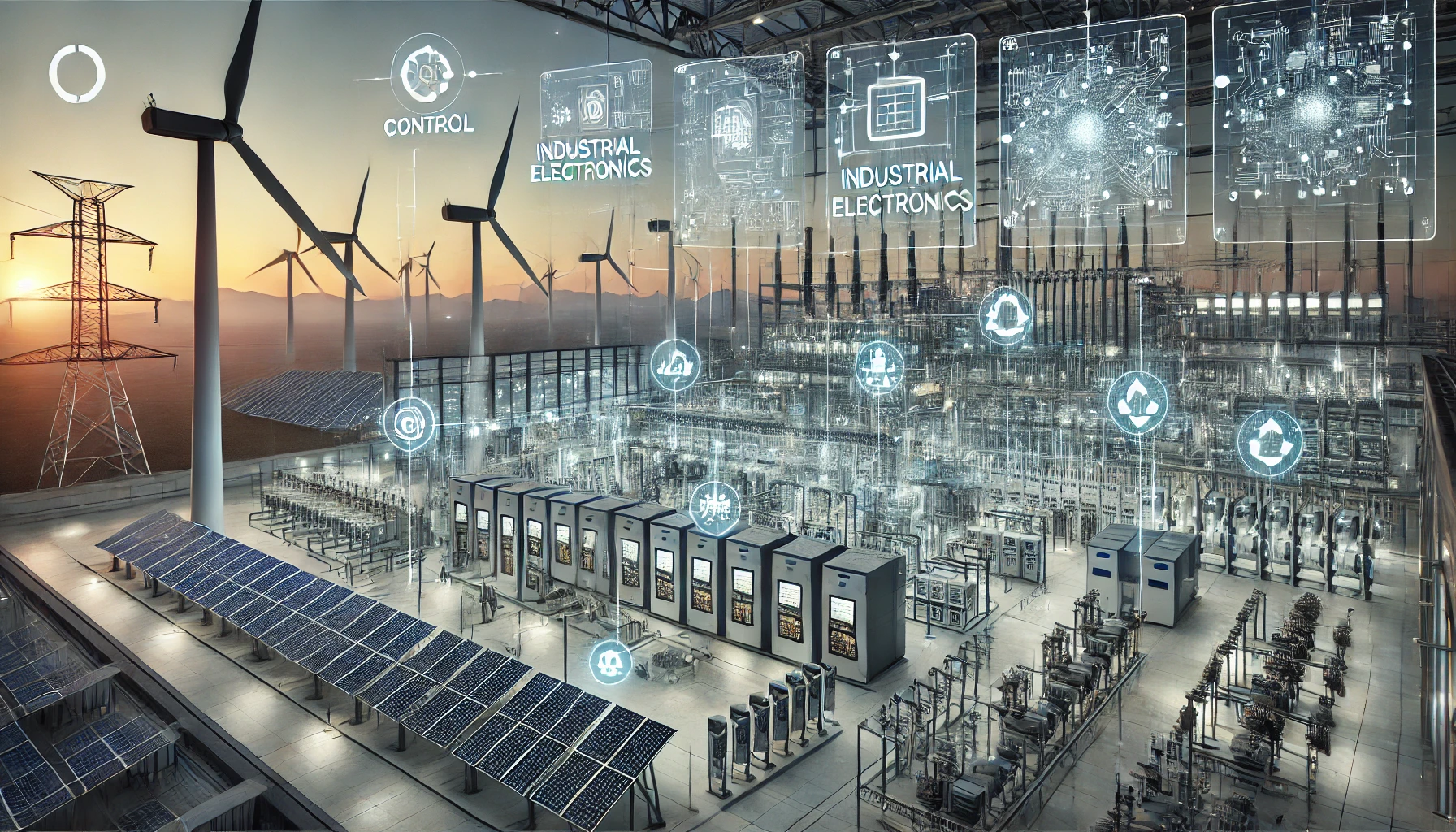Industrial Electronics Solutions in the Power Generation Sector
The power generation industry plays a crucial role in meeting the global demand for electricity, a resource that is the backbone of modern civilization. As the energy sector evolves to meet the challenges of sustainability, efficiency, and reliability, the integration of advanced industrial electronics has become essential. These electronic solutions not only optimize the performance of power generation systems but also enable the transition toward greener and smarter energy technologies.
This article explores the significance of industrial electronics in power generation, highlighting their role in enhancing energy efficiency, ensuring system reliability, and enabling the integration of renewable sources.
The Role of Industrial Electronics in Power Generation
Industrial electronics refers to the use of electronic components and systems in industrial processes. In power generation, they are key to monitoring, controlling, and optimizing the entire energy production chain. From turbines in power plants to grid distribution networks, industrial electronics are embedded in every stage of the process.
Key solutions in the power generation sector include power conversion systems, control and automation technologies, protection and monitoring devices, and communication systems. Each of these areas is vital for maintaining stable, efficient, and reliable power production.
1. Power Conversion Systems
Power conversion is essential in ensuring that the electricity generated by power plants is suitable for consumption. Converters, inverters, rectifiers, and other power electronics play a critical role in adjusting voltage and frequency to match the requirements of the grid. For renewable energy sources like wind or solar power, power electronics manage the fluctuating nature of energy generation by stabilizing output and making it grid-compatible.
In wind power, for instance, variable-speed turbines require sophisticated power converters to manage the electricity produced at varying speeds and frequencies, ensuring it aligns with grid standards. Similarly, in solar power plants, inverters convert direct current (DC) generated by photovoltaic cells into alternating current (AC) for distribution.
2. Automation and Control Systems
The operation of modern power plants relies heavily on automation and control systems. These systems use advanced sensors, programmable logic controllers (PLCs), and distributed control systems (DCS) to regulate the performance of turbines, boilers, and generators in real-time. They ensure that every component operates within optimal parameters, preventing malfunctions and maximizing output efficiency.
For example, in a thermal power plant, automation systems adjust fuel input and combustion processes to optimize heat generation, reducing fuel consumption and minimizing emissions. In renewable energy plants, control systems dynamically adjust operations to respond to weather conditions and load demands.
Additionally, industrial electronics enable remote monitoring and control. This is especially beneficial in managing renewable energy farms, which are often spread across large geographical areas. Real-time data from wind turbines or solar panels can be analyzed and used to optimize performance remotely.
3. Protection and Monitoring Systems
Power generation facilities are subject to various stresses, from mechanical wear and tear to environmental challenges. Industrial electronics provide robust protection and monitoring solutions to ensure the longevity and safety of equipment. Relays, circuit breakers, and protective sensors are vital in detecting faults like short circuits, overloads, or ground faults, which can damage equipment or cause downtime.
Furthermore, modern condition monitoring systems use a combination of sensors and analytics to predict potential failures before they occur. These systems track parameters like temperature, vibration, and electrical currents, alerting operators to any anomalies that could indicate impending issues. This approach, known as predictive maintenance, reduces unplanned outages and extends the lifespan of critical power generation equipment.
4. Renewable Energy Integration
The global shift toward renewable energy is one of the biggest transformations in the power generation sector. Industrial electronics are instrumental in making this shift possible by facilitating the integration of renewable energy sources such as wind, solar, and hydro into the power grid.
Power generation from renewable sources is inherently variable. Industrial electronics solutions like microgrids and energy storage systems (ESS), combined with advanced power management software, help balance this variability. They enable real-time energy management, ensuring the grid can absorb and distribute energy from renewables while maintaining stability.
For example, battery energy storage systems store excess energy produced by renewable sources during periods of low demand, releasing it back into the grid when demand peaks. These systems rely on advanced power electronics for efficient charging and discharging cycles and for seamless integration with the grid.
5. Smart Grid Integration and Communication Systems
As the energy sector moves toward smart grids, the role of industrial electronics becomes even more significant. Smart grids require seamless communication between power plants, grid operators, and consumers. Supervisory control and data acquisition (SCADA) systems, along with other industrial communication networks, enable real-time data exchange across the entire energy network.
These communication systems allow operators to balance supply and demand dynamically, optimize the flow of electricity, and identify potential problems before they lead to outages. Smart meters and IoT (Internet of Things) devices, powered by industrial electronics, provide valuable data on consumption patterns, helping to create more efficient energy systems and reduce wastage.
Conclusion
The integration of industrial electronics into the power generation sector is revolutionizing how electricity is produced, managed, and consumed. From enabling the efficient conversion of energy to automating complex operations, and from protecting critical infrastructure to integrating renewable sources into the grid, these solutions are central to the industry’s ability to meet modern energy challenges.
As power generation moves toward decarbonization, decentralization, and digitalization, industrial electronics will continue to play a critical role in driving innovation and ensuring a reliable and sustainable energy future. By improving efficiency, reducing operational risks, and enabling smarter energy management, these technologies are the backbone of the evolving power landscape.



